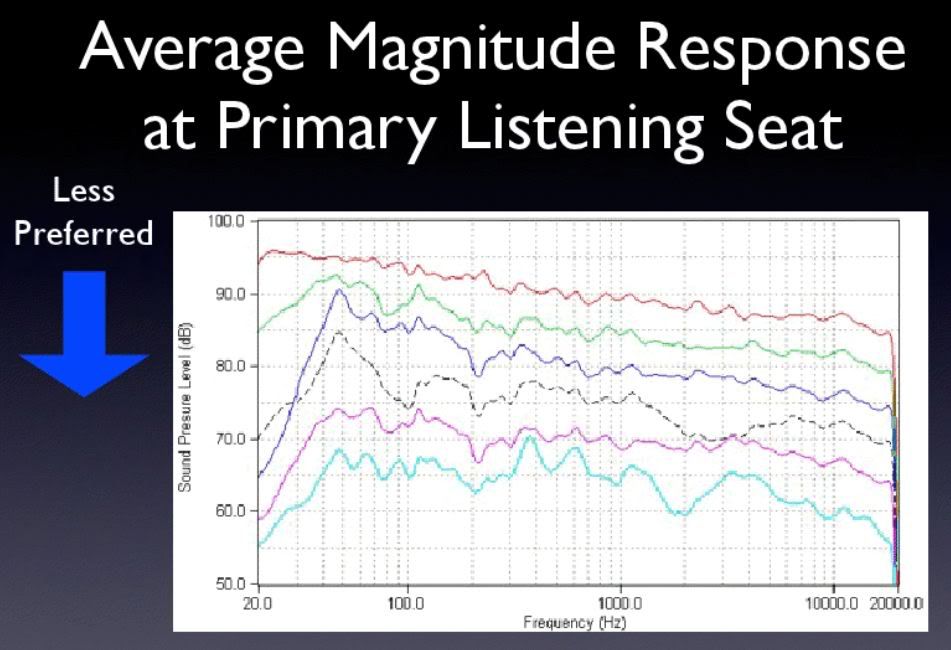RD-50 At 50", measured by John Atkinson(With MLSSA), in BG Radia's own 520i design.
Bohlender-Graebener Radia 520i loudspeaker Measurements | Stereophile.com
It's interesting to note that the reviewer and Atkinson loved the sound of this speaker. The frequency response evens out at the actual listening position, but the highs are still subdued.(The further away you get from a line source, the less subdued the highs will be.)
http://www.stereophile.com/content/...a-520i-loudspeaker-john-atkinson-january-2005
Bohlender-Graebener Radia 520i loudspeaker Measurements | Stereophile.com
It's interesting to note that the reviewer and Atkinson loved the sound of this speaker. The frequency response evens out at the actual listening position, but the highs are still subdued.(The further away you get from a line source, the less subdued the highs will be.)
http://www.stereophile.com/content/...a-520i-loudspeaker-john-atkinson-january-2005
Last edited:
Not to go off topic too much but you might find it really insightful to listen to test tones going up to 20kHz and find for yourself how much (or rather how little) is really up in that range above 15kHz.
Then why would we need hi-rez?
I have EQ'ed my RD-75's flat to 20k with an EQ point at 20 kHz, +10 dB, Q=2.5, but I really cant say I hear a big difference if I turn that EQ off.
Thanks for all the great responses. Is there any benefit to the 75 over the 50 other than low end extension, power handling?
How do you set up an active notch filter for the 4k or so peak with a DCX?
Would a 400hz 4th order cross be ok for the RD50 to 2 RS180's?
Set the freq to 4Khz and narrow down the width or Q setting until it only affects the range necessary. You will need to measure to do this properly. It is easier to make a large boost or cut first to see what area is affected and then slowly dial back until you get the result you want. This is done with a parametric section, not the graphic EQ.
Greg
Thanks for all the great responses. Is there any benefit to the 75 over the 50 other than low end extension, power handling?
How do you set up an active notch filter for the 4k or so peak with a DCX?
Would a 400hz 4th order cross be ok for the RD50 to 2 RS180's?
The peak is at ~5.5 kHz.
400 Hz 4th order surely is ok. I run my own RD-75's down to 180 Hz with 4th order XO.
RD-75 does not have more LF extension that RD-50. The only difference is impedance, power handling and height of the wavefront. The latter means that the RD-75 is true line-source lower in frequency that the RD-50.
The peak is at ~5.5 kHz.
400 Hz 4th order surely is ok. I run my own RD-75's down to 180 Hz with 4th order XO.
RD-75 does not have more LF extension that RD-50. The only difference is impedance, power handling and height of the wavefront. The latter means that the RD-75 is true line-source lower in frequency that the RD-50.
My room is 21x21 but I as worried about the listening distance with the bigger 75. Its a home theater too. I like the close perspective. Its a 16 foot diag screen. This isnt the greatest picture of set-up but maybe you can extrapolate.

I sit 1.2 meters away from my RD-75's. Any distance really is OK as long as you can EQ the frequency response to fit the desired distance.
Does it just roll off the highs being close or is it a really ragged response?
Does it just roll off the highs being close or is it a really ragged response?
What happens is that the response below 700 Hz changes (for the RD-75). This is because the driver is not a true line-source below 700 Hz.
At shorter distance you may get too much level below 700 Hz, but that again depends on baffle size when using the driver as a dipole.
"It all depends" is the universal answer for almost everything I guess....
Im not sure if its been addressed before but would an array of 6 NEO8PDRs per side have an advantage to the RD50? It seems efficiency, power handling, top end extension, and likely ultimate SPL would be enhanced while low end extension is bumped a bit to 500hz 4th order elect.
It also moves the resonance to 12K.
Is there anything Im missing as far as the physics of the two different arrays?
It also moves the resonance to 12K.
Is there anything Im missing as far as the physics of the two different arrays?
The Neo8 is almost 20 dB down at 20khz, so there is certainly not more top end extension compared to RD-50. And off-axis it's far worse, since the Neo8 is wider than RD-50.
Thanks.
Its initial desirability was that its expandable to additional drive units.
I wish I could hear the 50 & 75.
Anyone willing to demo their system for a nice lunch?
- Status
- This old topic is closed. If you want to reopen this topic, contact a moderator using the "Report Post" button.
- Home
- Loudspeakers
- Planars & Exotics
- bohlender graebener rd50 dipole eq ?
